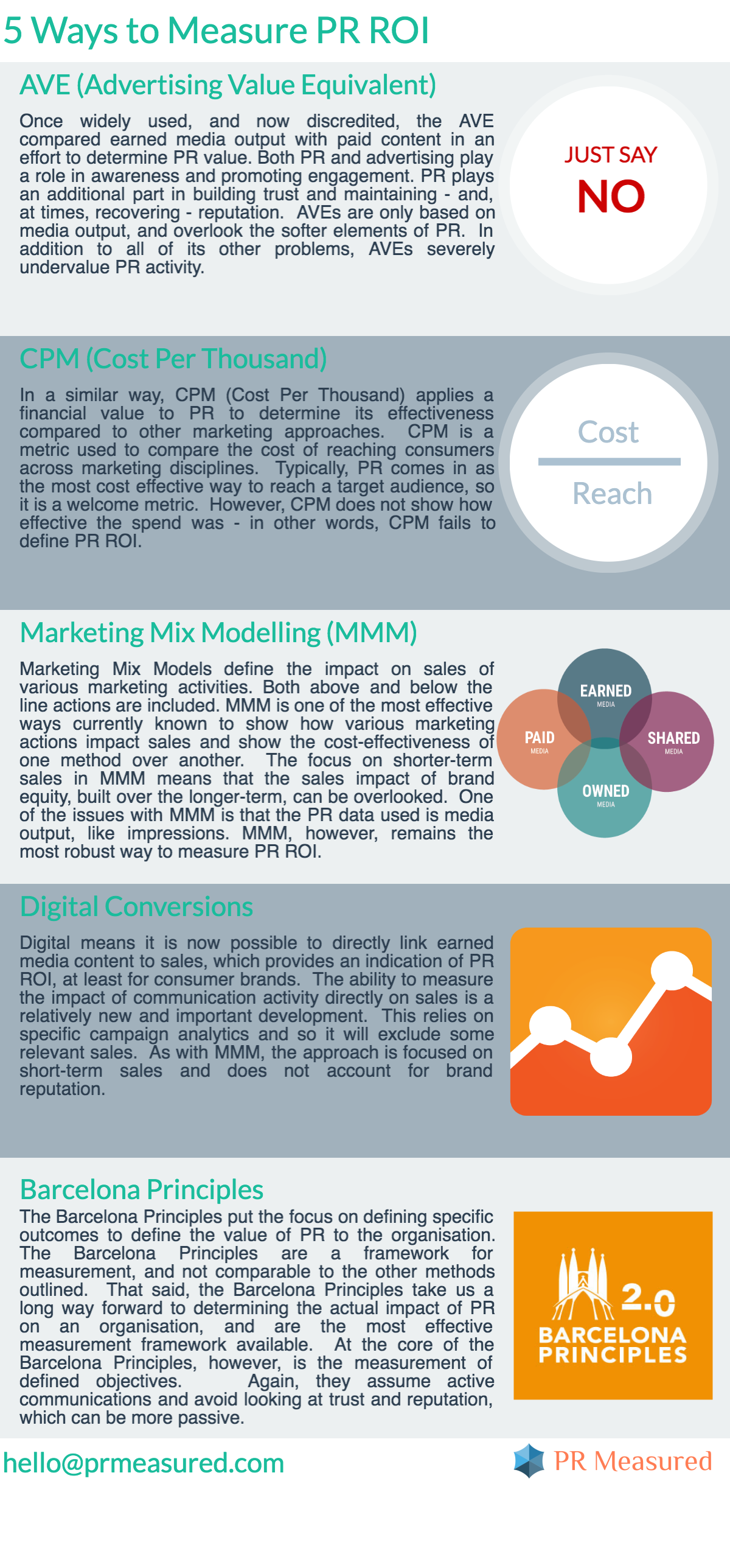PR ROI, or return on investment, has been the focus of PR measurement since its inception. ROI is the financial return to an organisation relative to the cost of investment. There are a variety of ways of defining return, and to keep it simple we will assume that return refers to an organisation’s financial income. While there has been significant improvement over the past 50-odd years of measurement, we are not yet at the point of truly defining that financial return. Over the years we have seen several approaches to defining PR ROI. Most mistakenly assume that media output is the only way that a PR pro will benefit an organisation, and one of the biggest issues with PR ROI is how to define the value of an organisation’s reputation.
Reputation, and its qualified financial return, can be challenging to measure. As a result, an organisation’s reputation can be overlooked and undervalued. The recent Watson Helsby survey into the corporate communications / affairs directors found that 20% of FTSE 100 companies do not have a corporate communications / affairs director. The report noted these 20 organisations are usually B2B where “reputation is not seen as a strategic asset that requires any significant investment”.
Conversely, the Reputation Dividend reports on the value of reputation to an organisation’s market capitalisation. In the UK, at the time of the report, corporate reputation added £790bn, or 36%, to the market capitalisation of the FTSE350. The S&P500 owed 17% of its market capitalisation to reputation, or $3,329bn. These numbers only define the value of reputation to share price rather than the financial income to an organisation, but they indicate the high value of reputation. In defining ROI, comms professionals do need to highlight their role in managing reputation and it’s importance as a strategic asset.

